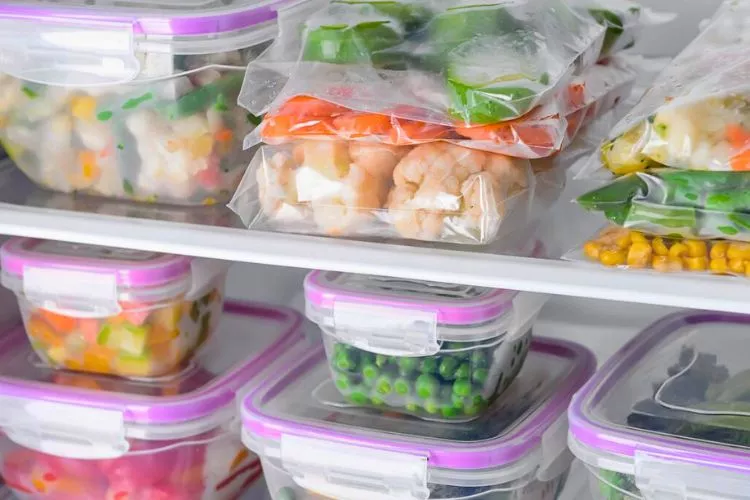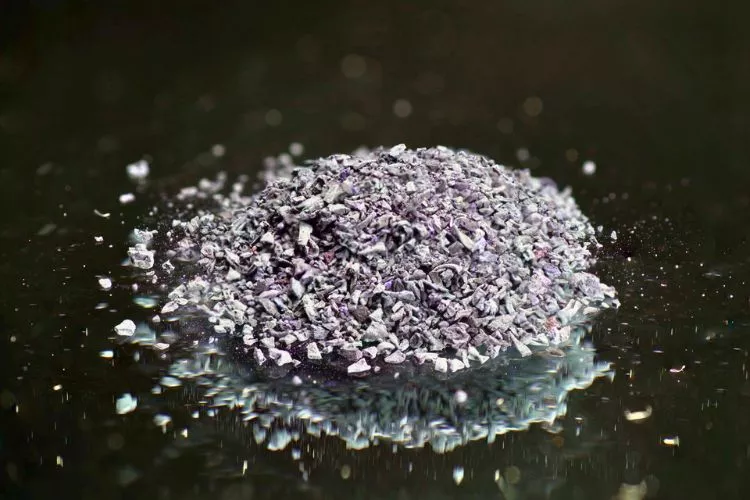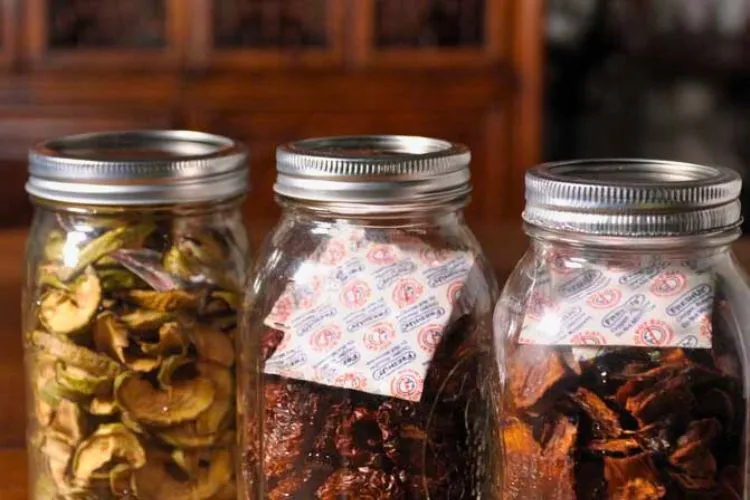Oxygen absorbers are crucial in food preservation, especially for long-term storage.
By removing oxygen from sealed food containers, they can effectively inhibit the growth of mold, bacteria, and bugs, thereby extending the shelf life of foods and ensuring their freshness.
In this article, I will guide you on how to make oxygen absorbers for food storage with simple, readily available materials. Not only will this save you money, but you’ll also have the satisfaction of knowing exactly what goes into these handy little packets.
By learning the science behind them and exploring different types to suit your specific needs, you’ll be well-equipped for maintaining the quality of your stored food items.

So let’s dive in and understand how to create these little wonders at home!
How to make oxygen absorbers for food storage?
Oxygen absorbers play a vital role in preserving food for extended periods by eliminating oxygen from sealed containers. This prevents the growth of bacteria, mold, and insects, ensuring your food remains fresh and safe to consume.
This guide on how to make oxygen absorbers for food storage will walk you through the process in a few simple steps.
Essential Materials
To make homemade oxygen absorbers, you’ll need the following supplies:
- 100% pure iron powder
- Table salt
- Coffee filters or non-woven fabric
- Food-safe sealable bags
- Twist ties, string, or rubber bands
- Airtight storage containers
The Power of Iron Powder
The primary ingredient in oxygen absorbers is iron powder, chosen for its ability to oxidize through rusting.

- Purchasing Iron Powder: Ensure you buy 100% pure iron powder, available at most pharmacies, chemical supply stores, or online.
- How Much Powder to Use: The amount of iron powder you’ll need depends on the size of the container you’re sealing and the volume of food stored within. A typical ratio is to allocate 200-300 milligrams of iron for every 100 cubic centimeters of container volume.
Additional Ingredients to Kickstart Oxidation
Iron powder is not enough to be an effective oxygen absorber as it needs a catalyst to kickstart the rusting, or oxidation, process. Here’s where table salt comes into play.
- The Role of Table Salt: Table salt or sodium chloride acts as a catalyst, speeding up the oxidation process in the iron. A pinch is typically all you need.
- How Salt Works: To understand how this works, consider the chemical nature of the compound. Salt attracts moisture from the environment, making it easier for the iron to oxidize. Once salt comes into contact with moisture and the iron, it starts facilitating oxidation. This swiftly results in the breakdown of iron molecules into rust, consuming oxygen.
- The Process: Add a pinch of table salt in the iron powder and mix them. The quantity of salt does not need to be precise; a small amount is more than enough to initiate the oxidative process. The key here is to evenly distribute the salt throughout the iron powder to ensure uniform oxidation, creating an effective homemade oxygen absorber.
By understanding the role of salt as a catalyst, one can significantly increase the effectiveness of homemade oxygen absorbers, even competing with commercially produced variants.
Assembling Homemade Oxygen Absorbers
Now that you have your materials, you can make your oxygen absorbers.
- Measure the appropriate amount of iron powder, considering the size of your storage containers, and add the pinch of salt.
- Carefully pour the mixture into a coffee filter or piece of non-woven fabric. This will serve as the pouch for the absorber.
- Carefully seal the pouch by twisting the open end tightly and securing it with a twist tie, rubber band, or string.
Ensuring Maximum Performance
For maximum effectiveness, be sure to follow these precautionary steps:
- Store your homemade oxygen absorbers in an airtight container until they’re ready.
- Use a food-safe sealable bag with a zip lock or an airtight container for food storage.
- When transferring food into containers or bags, ensure the surface is dry to prevent accidental activation of the oxygen absorber.
Final Recommendations
Remember that homemade oxygen absorbers may not have the same efficiency as commercially available options. Thus, consider purchasing ready-made absorbers for long-term or critical food storage needs.
However, homemade oxygen absorbers are a cost-effective, environmentally conscious alternative for short-term or small-scale projects.

By following this comprehensive guide, you’ll save money on pre-made oxygen absorbers and gain a deeper understanding of food preservation. Happy preserving!
Frequently Asked Questions (FAQs)
What can I use instead of oxygen absorbers?
One alternative to oxygen absorbers is using hand warmers. Hand warmers use the same technology as oxygen absorbers, and they contain a little moisture which makes them suitable for sealing and preserving dry and moist foods. Another alternative is activated charcoal, which has different properties than oxygen absorbers and might not perform as effectively in certain situations.
What is a natural oxygen absorber?
A natural oxygen absorber is a substance that can absorb oxygen in a sealed environment without using any artificial chemicals. Although not as efficient as commercial oxygen absorbers, materials like brown sugar and salt cakes can be used as natural oxygen absorbers in certain cases.
Can you use rice as an oxygen absorber?
Rice is not considered an effective oxygen absorber. Instead, rice is a natural desiccant that absorbs moisture and can prevent foods from becoming moist and moldy[3%5E]. However, rice cannot replace oxygen absorbers in terms of preventing oxidation and extending the shelf life of foods.
Do oxygen absorbers work in Ziploc bags?
Although not as efficient as using airtight storage containers or Mylar bags, oxygen absorbers can work to some extent in Ziploc bags. The oxygen absorbers help remove oxygen from the bag. Still, the Ziploc’s plastic barrier may not be as resistant to oxygen, light, and other potential spoilage factors as other storage materials.
What is the best absorber of oxygen?
Iron powder is considered the best oxygen absorber due to its ability to rapidly oxidize or rust when it comes into contact with moisture and oxygen. This process consumes oxygen and creates a more stable environment for long-term food storage. Commercially produced oxygen absorbers often rely on iron powder as a key ingredient.
Conclusion:
Making oxygen absorbers for food storage is not only a sustainable and cost-effective process but also allows you to take control of your food preservation needs.
By understanding the importance of iron powder and its oxidative properties, coupled with the catalytic role of table salt, you can create effective homemade oxygen absorbers that help extend the shelf life of your food items.
While commercial options may offer higher efficiency, learning to make your oxygen absorbers provides an essential skill and knowledge base for those seeking self-sufficiency in food storage.
Happy preserving!


